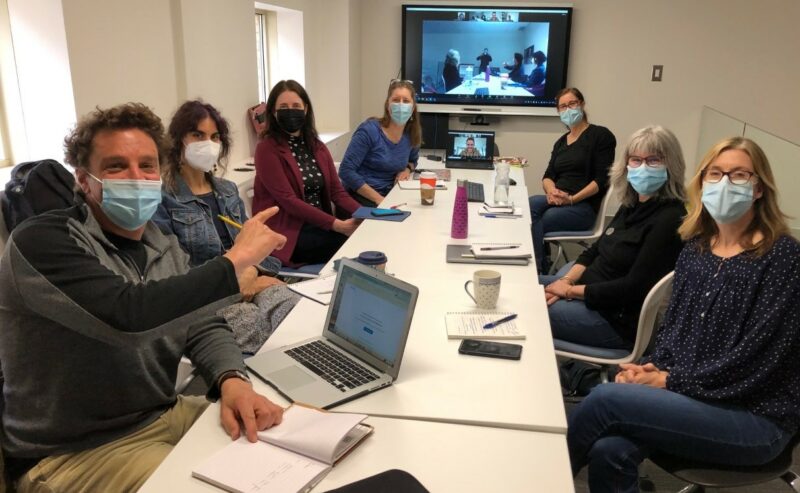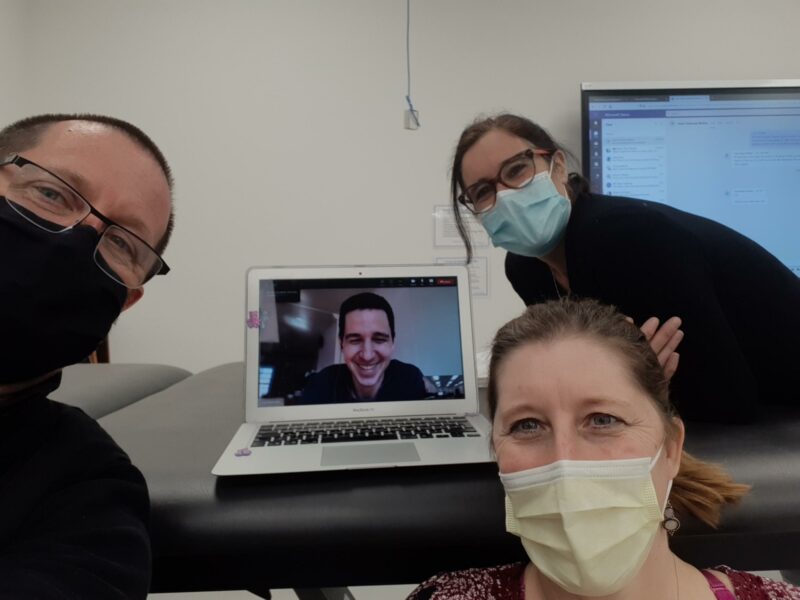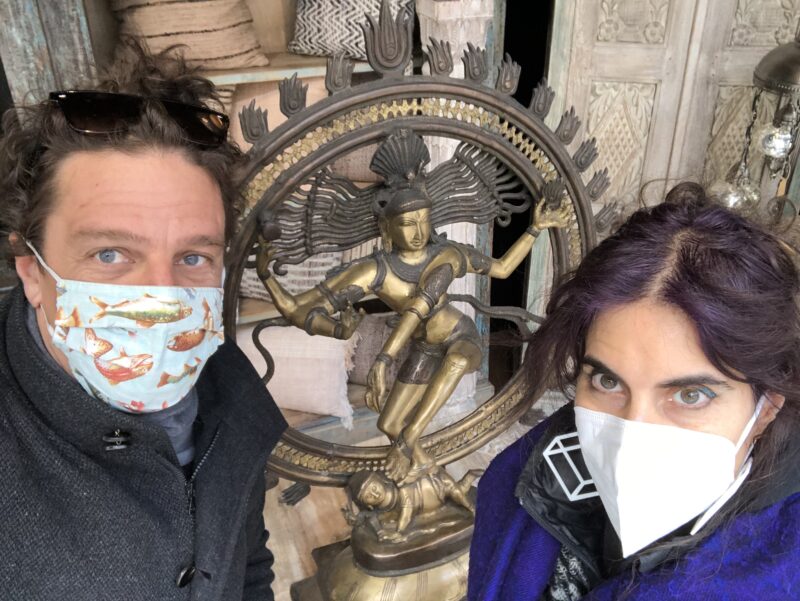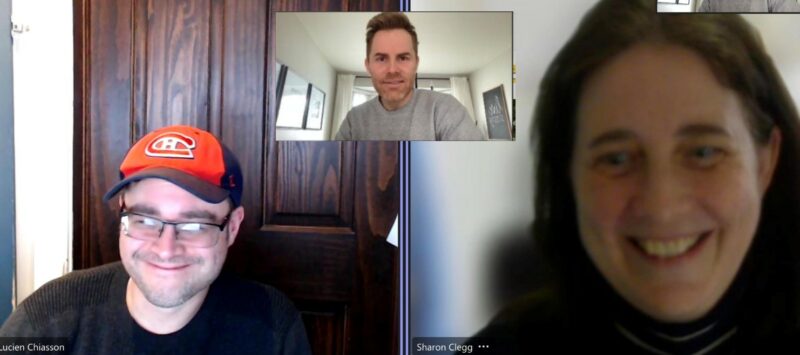Winter 2022 Learning Communities Update

Three new Learning Community projects are in development this Winter 2022 semester. Two projects, Physics for Physiotherapy and Inter-professional Education, illustrate the continued expansion of LC curriculum development to career programs, specifically in the medical technologies, where collaboration between program and contributing discipline faculty aims to optimize student learning. A third project, LCs for Small Social Science Disciplines, is developing a new model for pairing courses by way of a common time-block, a complementary theme, and integrative learning activities.
Physics for Physiotherapy
Maureen MacMahon (Physiotherapy), Chris Roderick (Physics), Jean-François Brière and Annie-Hélène Samson (LC Science leads)

The goal of the Physiotherapy-Physics LC project is to better integrate the Physics course in the Physiotherapy Technology program, ensuring that students are learning physical reasoning in authentic Physiotherapy contexts. Consultation among faculty members of the program made it clear that physics principles pertain not only to the few courses that are linked to specific physics competencies in the program matrix, but that they truly are foundational knowledge from day one of the program.
As we began to work together, we found (surprise!) that the program matrix of competencies was not the guide we had hoped it to be. The matrix shows where the competencies are developed and evaluated, but not all the courses where they are being used. Importantly (significantly!) we discovered that the biomechanics competency was being used — and was central to some activities — in the 1st-semester course Intro to the Profession, and in the 3rd semester course Data Collection and Intervention. These revelations have helped determine that reasoning about stability (for patient transfers), and about the context/position-dependent nature of anatomical forces and stress, are the guiding principles for generating new content and activities in the first half of the Physics for Physiotherapy course.
Establishing links between these courses has prompted a valuable reflection not just in this learning community but by the majority of the physiotherapy technology faculty as to how we use physics and how we ask students to reason physically. As we continue to progress towards shared outcomes and activities, we are convinced that the strength of this common understanding will be passed on to our students via the new curriculum.
LCs for Small Disciplines in Social Science: The Temple
Johanne Rabbat (Religious Studies), Jiri Tucker (History & Classics), Lisa Steffen (LC Social Science lead) and Pat Romano (Certificates LC lead)

This LC project will test a curricular model whereby students in the General Social Science profile can explore different themes through the co-teaching of small disciplines: Two different classes in two different disciplines scheduled in one common time block. This model may be used in other profiles that would like to link introductory courses (e.g. North/South; Anthropology and Sociology might develop an ethno-sociology themed pairing). Most importantly, we hope to create a sense of community that leads to successful outcomes.
Organized around the theme of “The Temple: Myth, Mind and Cult,” our introductory courses in Religion and Classics will cover their respective topics, but together will seek to find convergences between the classical and the religious worlds, which are admittedly intimately intertwined. These convergences might be found in various ways. Religion speaks to the philosophical system of yoga, incorporating physical practice and meditation; Classics addresses sacred and civic temple spaces. Religion speaks to the delimitation of sacred space, incorporating ritual and various other forms of praxis; Classics to the Parthenon. Religion incorporates ethical systems and moral codes; Classics speaks to the Homeric code and Hoplite Revolution as well as the individual in Athens.
Meeting weekly this winter, we have found several points where the two courses converge that could be the basis for shared activities in both classes. These topics include the development of social hierarchies; contextualizing artifacts in a museum; and understanding the meanings of temple and ritual, among others. This March, we tested our ideas for a museum excursion, as Jiri’s Classics intro course made a museum trip that examined artifacts and their various meaning, while Johanne Rabbat observed. While this artefact was not part of the museum visit. Our preparations for Fall 2022 have also included planning for a visit to Johanne’s Intro to Religion class by a dancer who will perform a Hindu ritual dance (in fact, the photo for this post represents Shiva in his dance of death – with Jiri and Johanne on either side). Jiri’s Classics students attend this demonstration to better appreciate dance and ritual, central to many activities in the Classical world. Finally, we attended a talk on Alexander the great and his influence in Mughal India. The speaker, Aqsa Ijaz, of the department of Islamic Studies at McGill, spoke of the Hellenistic leader and his role, not as an influential leader, but a satire on the illusions of seemingly powerful ruler. The conclusion remind both the students and the teachers of Classics and Religion how this remains true even today.
While the details of how these two courses intersect continue to develop, the scheduling has been arranged. Initially, the course was to be a shared three-hour block. But, as this would have limited student selection of other courses -and therefore threatened the course’s enrollment, the course will be scheduled as a 1.5 hour block X2 during prime time between 8:30 and 4:00pm, and our classrooms will be close together to facilitate exchanges. Finally, we identified two Wednesdays for our museum and temple field trips. This will allow for a museum visit that includes the artefacts of the Classical World and South East Asia’s religious world. It is clear that this scheduling arrangement may evolve over the course of this LC’s development in subsequent years.
Interprofessional Education: Nursing and Physiotherapy
Sharon Clegg and Tim Miller (Physiotherapy Technology), Lucien Chiasson (Nursing), Jean-François Brière and Annie-Hélène Samson (LC Science leads)

We entered into this project to explore the Interdisciplinary Team Functioning competency through the collaboration of faculty from Nursing and Physiotherapy Technology. Both programs address this team functioning competency in the third year of their program.
Our goal is to incorporate integrated nursing and physiotherapy technology learning activities into the students’ final year of their respective programs. The full scope of this project will eventually include all medical technology and social service disciplines, as each one has a team functioning competency with the last year of the program. A secondary objective would be for students to have a stronger understanding of their own profession by exploring the similarities and differences with other healthcare disciplines. This would also foster more efficient communication and collaboration in a professional setting, favoring optimal patient outcomes. In brief, our project falls under the umbrella of Interprofessional Education because medical technology students learn with, from, and about each other.
The major obstacle we have encountered so far has been the logistics of finding a common time for these two groups of students to be together in person. With the help of a contributing discipline course and professor, namely Laura Shea from Sociology, we have been able to secure a common block for the students to collaborate. At this point, the plan consists of the students meeting twice in the Fall semester for 3 hours each session. For the first 3-hour session, we will tackle the basics of working in a multidisciplinary healthcare team by tasking the students to explore common models and theories, as well as to apply their knowledge through active role-playing scenarios. For the second 3-hour session, the students will be asked to apply common models and theories of behavioral change in active role-playing scenarios with more complex and challenging healthcare situations, including cultural dimensions.
We are now exploring how these students can collaborate during the following semester at various points throughout their internship and stage courses. And, we are working on ways to assess students in their respective courses.
And that’s not all…
This winter also saw the launch of a new Social Science course pairing, led by Sara Kendall (Geography) and Mark Beauchamp (History): Integrative Seminar (300-308-DW) “Social Movements in Montreal” + Geography Field Trip 360-321-DW “The City as Classroom.” Watch for a report in our May post on how things went for Sara and Mark as they test piloted this new offering for North South Studies.
Interested in learning more about LC opportunities for interdisciplinary team teaching? Certificates LC lead Pat Romano will lead a session in May on a new “lite” format for linked courses, which involves using common time-blocks to structure integrative learning activities and projects for students in two different classes. This may appeal to teachers who are attracted to the concept of team teaching, but may not be able to commit logistically to the all-in challenge of pairing back-to-back courses with the same students.
Since 2016, the Learning Communities project has support interdisciplinary team-teaching in Science, Social Sciences and Certificates, in both Pre-U and Career programs . In 2022-23, more than 50 courses will be offered to Dawson students under the LC banner. Don’t hesitate to get in touch with questions or comments – we welcome all inquiries!
Ian MacKenzie (LC project lead), Jean-François Brière and Annie-Hélène Samson (LC Science leads), Pat Romano (Certificates lead), Lisa Steffen (Social Science lead)


